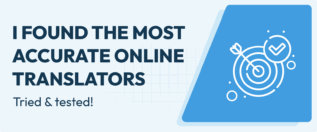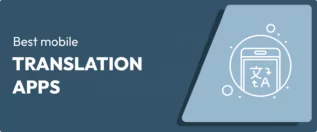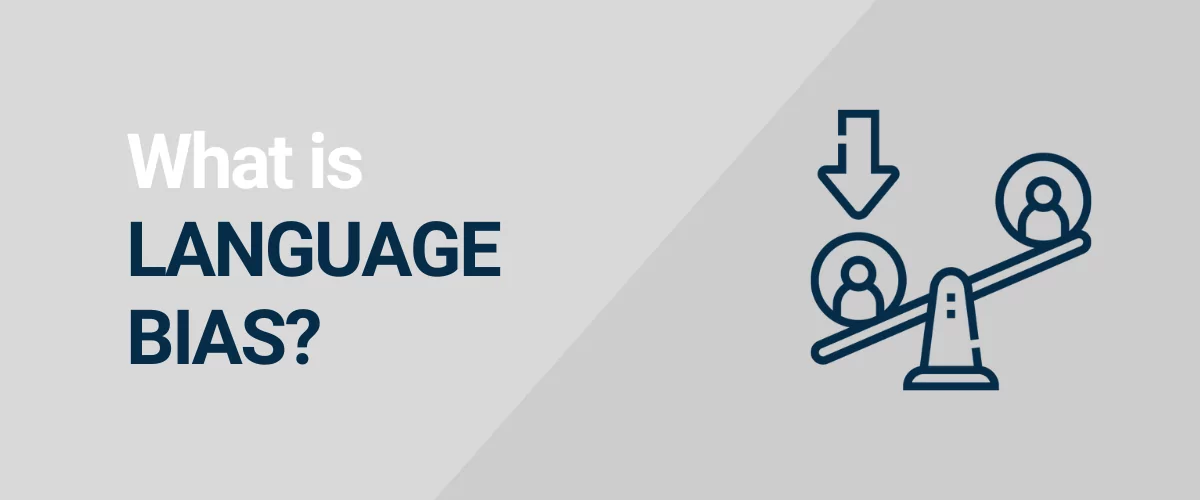
In this post
In this post, we want to talk about language bias, what it is, why it matters, and how to avoid it.
Language is alive, it’s always developing and taking on new shapes. At the same time, it is a construct of the culture, time, and environment that it evolved and is being used in. When things change on the outside, it also has an effect on the way people communicate.
Yet, because language often moves slower than the circumstances around it, it can become outdated. One of the ways this shows is when language carries bias. That means using speech in a way that works against certain groups of people, portrays them in unflattering ways, ostracizes them, or creates and perpetuates stereotypes against them.
This doesn’t have to be intentional. It can simply be due to outdated terms and phrases because someone’s use of language hasn’t caught up with the times. However, even if done by accident, it’s not a good look. That’s why it’s a good idea to learn to avoid using language in a biased way, especially if you run a (multilingual) website and present yourself to a wide audience online.
To help you avoid the stumbling blocks of language bias and biased language, in this post we will provide help for recognizing them as well as practical tips and strategies to help you avoid using language in unflattering ways and foster more inclusive and objective communication.
What is Language Bias and Biased Language?
So, let’s talk about the elephant in the room: what exactly is language bias? While there are different definitions in different contexts, what we usually mean is using language divisively. It means communicating in a way that assigns unflattering characteristics to individuals and groups of people and splits people into an “in-group” and an “out-group”.

This happens through biased language. It means words and phrases that are exclusionary to others, treat one group better than another, or simply imply superiority and inferiority of different people.
As already established, this doesn’t have to be on purpose. It can simply be a matter of ignorance or unexamined language usage. However, it can lead to discrimination and prejudice, especially against marginalized groups. Let’s get into some examples to better understand.
Gender Biased Language
One of the most discussed forms of this phenomenon is gender-biased language. It is a subform of language bias based, as the name suggests, on language use that perpetuates certain stereotypes of genders or stresses superiority of one gender over the other.
This can be blatantly sexist, such as statements about typical male or female behavior or references to differences between men and women in ability, temperament, behavior, or occupation.
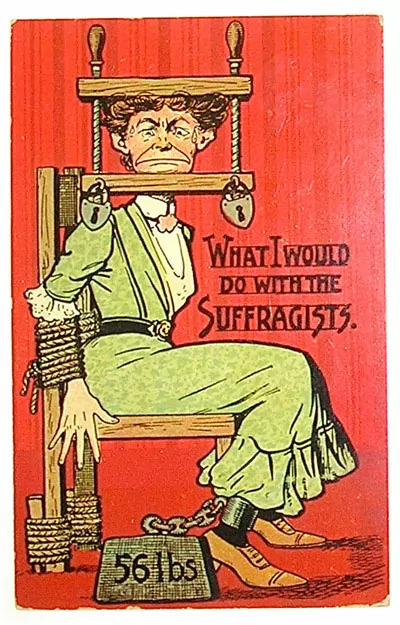
However, it can also be more subtle. For example, there are many languages that tend to promote a male/masculine-centric worldview in which the female/feminine is subordinate. Just look at these English words:
- mankind
- man-made
- to man the front desk
- man hours
- forefathers
There are also plenty of words that make automatic assumptions about the gender of the person occupying certain roles or occupations:
- chairman
- housewife
- fireman
- cleaning lady
- salesman
In addition, the use of pronouns also can have a similar function:
- When a doctor prepares for surgery, he has to do his best to relax.
- A secretary’s job is to stay on top of her duties.
This issue can be even more pronounced in languages where nouns are gendered. For example, in German, until some years ago, it was common to use the male word to describe entire occupations or groups. These days, there is a much stronger effort to use more inclusive language in those instances.
Other Biased Language Examples
Gender-biased language is not the only way that bias finds its way into everyday speech. It can be biased against other groups of people as well.
One example here are obviously offensive and pejorative words like calling people “Micks”, “Japs”, or the n-word. Obviously, while this is biased language, in this case we have clearly crossed over into racist territory. When someone uses these kinds of words, most of the time it’s safe to assume that they know what they’re doing and are doing it on purpose.
Yet, as we have learned, biased language can also be more subtle. Plus, it can express bias because of other characteristics:
- Age — Calling older people “the elderly” or “the aged”.
- Ability or health status — Describing people with different abilities or health conditions as “wheelchair-bound” or “victims” of a disease.
- Sexual orientation and identity — Using terms like “homosexuals” or “the gays”.
- Religion — Referring to members of one religion as “fanatic” and to those of another as “devout”.
- Race and ethnicity — Using “blacklist” and “whitelist” instead of “blocked list” and “allowed list” in software solutions. This implies that “black” is somehow bad while “white” is good.
- Social class — Labeling people as “poor” or “lower class” to describe their socioeconomic status.
Why Is This a Problem?
So, language bias exists. And regardless of whether someone uses it consciously or unconsciously, it can have a negative effect on readers and listeners.
Biased Language Discriminates and Isolates
Language bias can demean and cast out groups of people or make them feel misunderstood and misrepresented just because of who they are. It singles out people, boxes them in, and categorizes them by creating and perpetuating stereotypes.
That’s not a position any of us want to be in. How we describe others plays a big role in how they are perceived and thus treated. While it might seem harmless from the outside if you are not part of that particular group, the experience can be very different from the inside. It can reinforce discrimination that some experience in real life.
Alienates Part of Your Audience
Especially as a website owner or business with an online presence, you need to be aware of this. The people who come to your website are probably a lot more diverse than you think. For example, just have a look at your analytics and see the many places that your audience comes from.
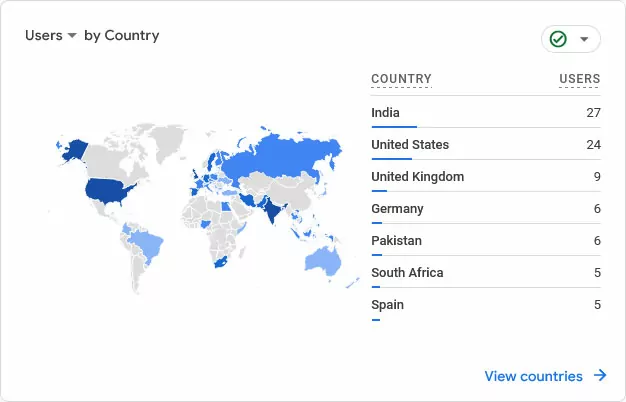
And that’s just location. They are likely distinguished by many other factors. Do you want each and everyone to feel welcome on your website or just a chosen few?
This is not about being politically correct. It’s about trying to be kind and inclusive to others, regardless of their age, gender, race, sex, ethnicity, physical or mental differences, religion, or economic status. It’s a show of respect to your audience, everyone in them, regardless of their background.
Causes Issues for Multilingual Websites
Finally, language bias can also make translation hard. This is especially true when translating from genderless to gendered languages. Here, you have to make decisions about the gender of certain words, even when the context doesn’t give all the information.
Take this sentence for example:
- A baker has a tough workday, starting very early in the morning.
From the sentence above, you can not figure out if the baker is male or female. If you were to translate it to a language like German, you would have to make a choice about that. How can you find a solution that doesn’t alienate parts of your audience?
How to Address Language Bias
So, now that we know what language bias and biased language is and why it can be harmful, how can you deal with the problem? What can you do so you don’t perpetuate it on your own website or in your writing and language use?
Cultivate Awareness
One of the problems is that using biased language can happen without noticing. As mentioned, a lot of bias can be expressed simply due to outdated language or lack of knowledge. So, the first step is to simply keep an open mind and examine your own use of language.

The main point is to be sensitive towards how you talk about others. See if you needlessly emphasize differences between people in your language usage and splitting them into “us” vs. “them”. Awareness is important since you can only change what you know you are doing.
Practice Empathy
Besides careful consideration of your use of language, another important step is to practice empathy. If you are not part of a group that is often talked down to, belittled, or discriminated against, it can be hard to imagine that language could have such a harmful effect.
However, as mentioned before, for many people belonging to these groups, hearing even unconscious bias in language can simply be a reinforcement of their everyday negative experiences.
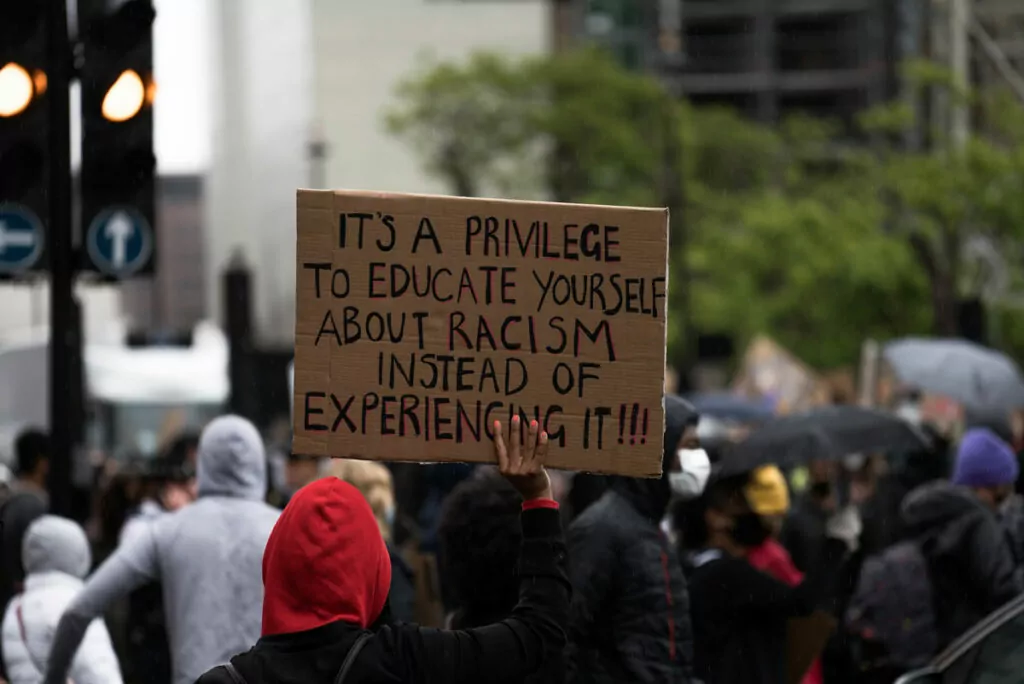
To understand that better, it helps to try and put yourself into someone else’s shoes. See how you would feel hearing certain things mentioned about yourself. Being a bit more empathic towards other people’s experience can help you be more mindful of the language you use.
Practice Using Gender-Neutral Language
Something that has become more relevant in recent years is the usage of gender-neutral language. It’s actually not that hard to do. Instead of using one specific gendered pronoun, consider using “he or she”, “they”, or not using a pronoun at all.
- If a student wants to take part in the class trip, he needs a permission slip.
- If a student wants to take part in the class trip, he or she needs a permission slip.
- If students want to take part in the class trip, they need a permission slip.
- Every student who wants to take part in the class trip needs a permission slip.
There are always possibilities to rewrite text so that it applies to everyone.
A second step is to replace gendered words with gender-neutral alternatives.
| Gendered words | Alternative |
| mankind | humanity |
| mailman | postal worker |
| to man the front desk | to staff the front desk |
| forefathers | ancestors |
| fireman | fire fighter |
| housewife | homemaker |
You don’t have to go overboard about this. For example, if you are talking about an actual, specific mailman, it’s still fine to call that person a mailman. It’s just if you are talking about people delivering mail in general that you would use the more inclusive term.
Learn Alternatives for Other Biased Language
Of course, finding better words to describe differences in people in unbiased ways also extends to other areas.
| Biased terminology | Alternative |
| the elderly | older people, people over the age of X |
| wheelchair-bound | a person using a wheelchair |
| homosexuals | members of the LGBTQ community |
| non-white people | people of color, BIPOC |
| poor people | people earning less than X |
| disabled people | people with disabilities |
In short, find ways to switch from language that puts a label on people to terms that are simply descriptive.
Avoid Mentioning Differences If They Are Not Relevant
The single best guideline to avoid biased language is to avoid needlessly pointing out differences if they are not relevant. Consider this sentence:
- The meeting was with two lawyers, one manager, and an Asian engineer.
In the above example, is it really necessary to mention that the engineer is Asian? Does it add anything to the context? Is it really vital information? Or is it simply singling out one person for no particular reason?
If you want to address bias in your language, it’s always a good idea to ask yourself if any labels you put to people are necessary or relevant to the topic, discussion, or context. If they are not, just leave them out. That way, you don’t needlessly exclude people.
Research All the Languages You Offer
As the owner of a multilingual website, you have the additional challenge that you have to address bias in more than one language. As seen with the German example above, each has its own peculiarities in this regard and it’s important that you make sure you do a good job in all of them.
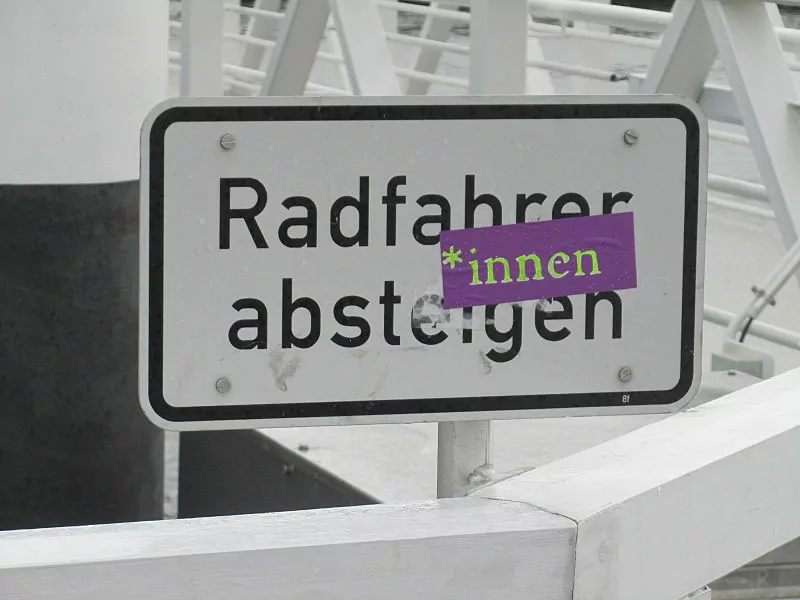
For that reason, it’s always a good idea to work with a trusted translator who is sensitive and experienced in these matters. While machine translation is often faster and more convenient, it can also be less acute in this area.
Consequently, always make sure your machine-translated content has seen a do-over by a human to address these issues. That is generally a good idea in order to ensure proper translation, however, checking for bias in language is an integral part of it.
Use TranslatePress to Implement Your (Bias-Free) Translations
Avoiding language bias on a multilingual website can be quite a challenge. Even though it’s worth it, it means more effort to get your translations right and check them for problematic language.
For that reason, we believe implementing translations on your website should be as simple as possible. That way, you can focus on other important work. That’s what we’ve tried to make possible with TranslatePress, our all-in-one WordPress translation plugin. Here’s why we think you should consider it for your website.
User-Friendly Interface
In TranslatePress almost everything happens in one very simple interface.
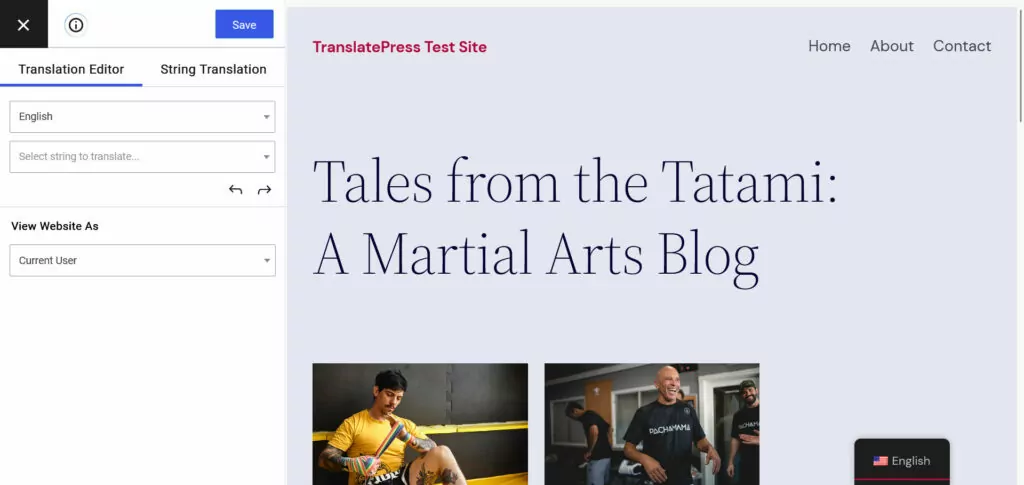
Use the preview on the right side to navigate your site and choose content to translate. Use the drop-down menu, arrow buttons, and pen symbol to pick individual text from your pages.
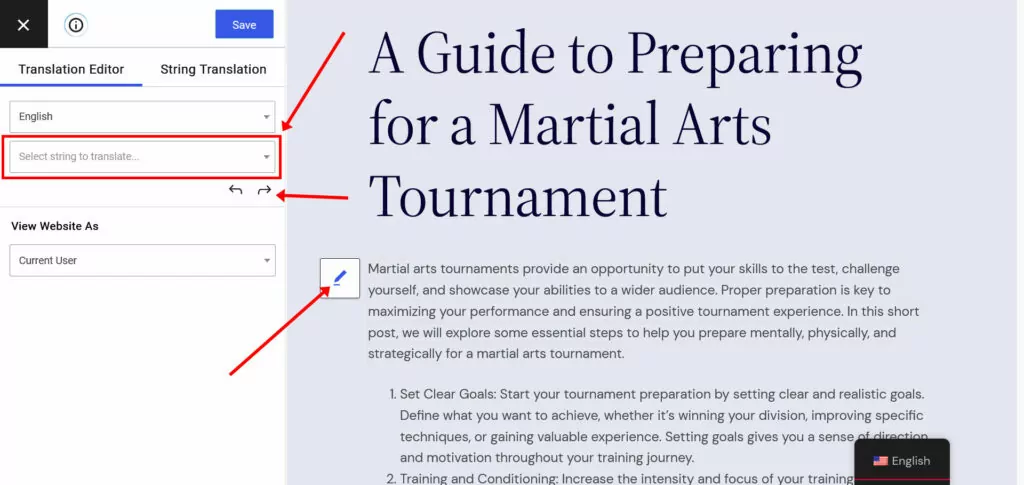
Once you do so, simply enter your translation into the respective field.
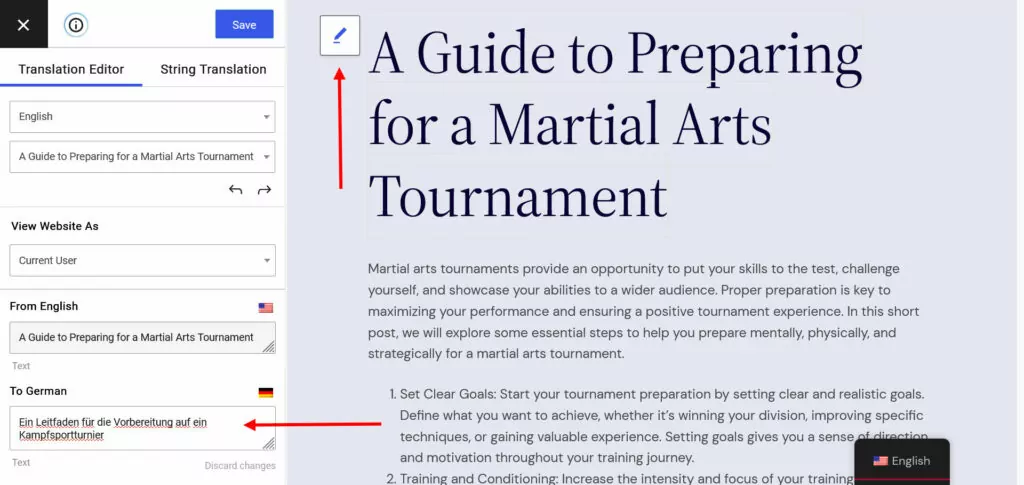
When you now save, the translation automatically appears out on your website.

Additional Features
Aside from its easy usage, TranslatePress offers these benefits:
- Translate every part of your site — Besides normal page content, the plugin automatically scans your WordPress website for text from themes, plugins, and other dynamic content. You can view and translate them in a separate menu.
- Translation for images — TranslatePress also allows you to provide different versions of your images for certain languages. That way, you can adapt images with text in them or simply use more culturally appropriate visuals for different language versions.
- Multilingual SEO — TranslatePress is designed to be SEO-friendly, meaning search engines can index and rank your translated content appropriately. This leads to better visibility in search results for different languages. There is also the SEO pack that allows you to localize your page URLs, SEO titles, and more.
- Automatic translation options — Integrate your site with automatic translation services like Google Translate and DeepL. They can provide initial translations quickly, which you can fine-tune to your needs.
If you are interested in learning more about TranslatePress, check out the full features list. The plugin is free to use to add one additional language to your site. If you need more features, have a look at the premium version.
In Short, Avoid Language Bias in Your Multilingual Content
Language bias is a real thing that’s important to be aware of, especially when running a website offering several languages. If left unchecked, you can accidentally offend and alienate entire groups of people, even without meaning to.
TranslatePress Multilingual
After this guide about biased language, hopefully you are more aware of the issues that can arise and how to address them. Don’t worry if it feels unfamiliar at first. Language can be as slow to change as the thinking and beliefs behind it.
The main thing is practicing awareness, employing empathy, and keeping an open mind. After that, it’s simply about informing yourself and trying to improve the way you express yourself.
What is an example of language bias or biased language that you often encounter online? How do you think it could be improved? Let us know in the comments!

